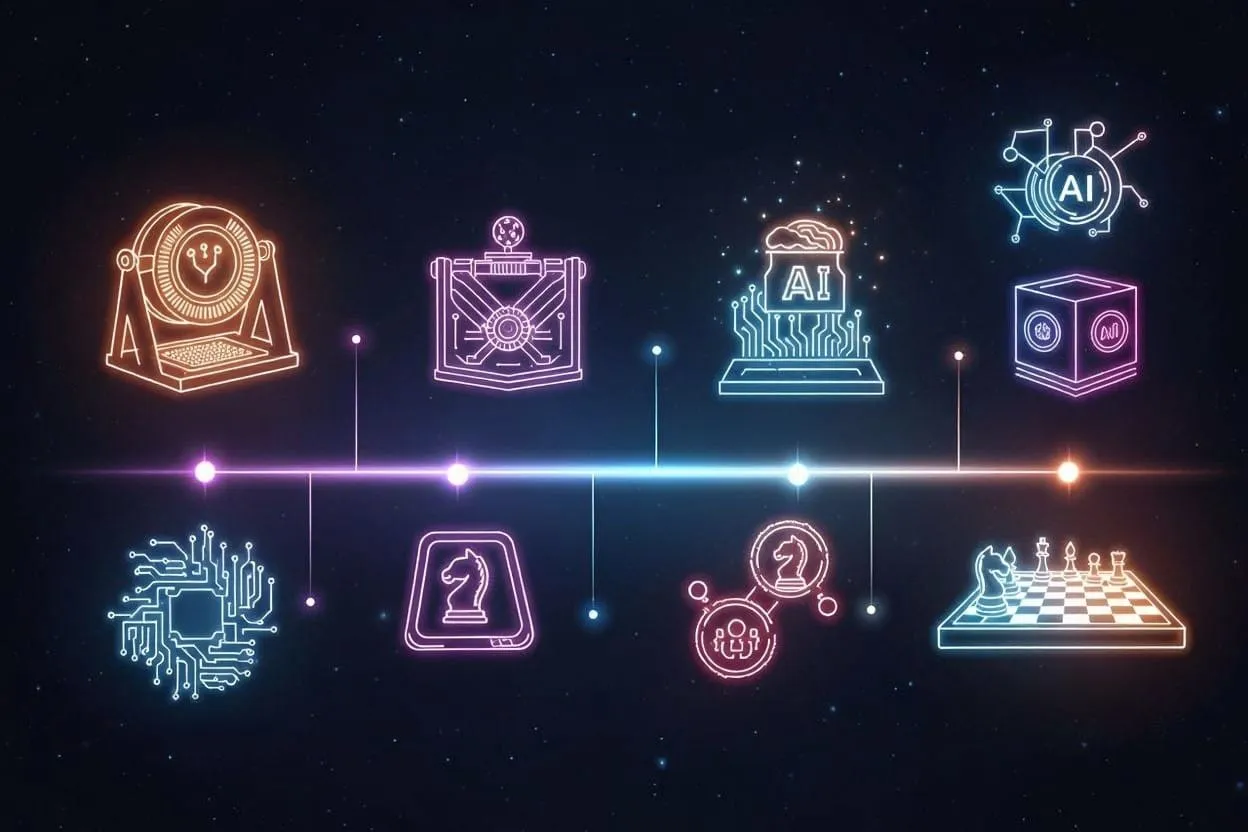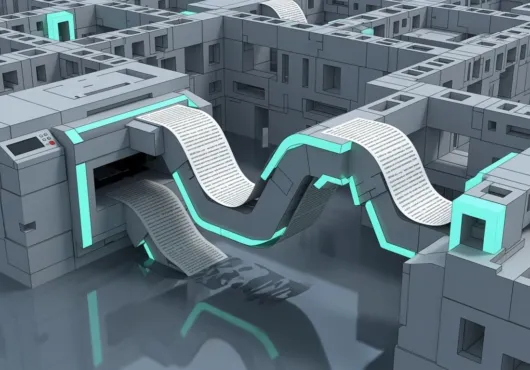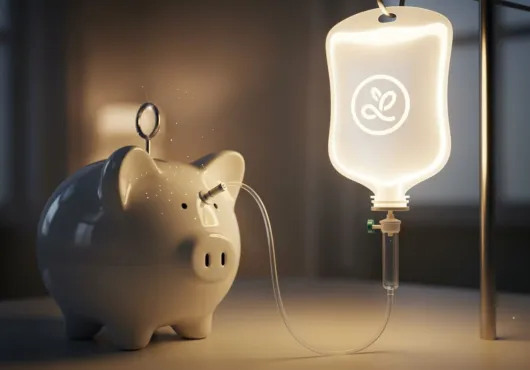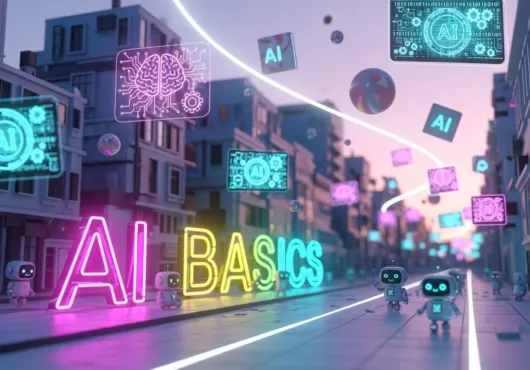So, here we are. AI’s a household name now, but it didn’t start out as the shiny, vaguely terrifying omnipresent force it is today. AI wasn’t born in a Silicon Valley lab or spit out by some all-knowing algorithm. No, it started with people—lots of frustrated people—and a desire to build something that could think. These days, we’re stuck with chatbots trying to convince us we need more toothpaste. How did we get here?
Like What You Read? Dive Deeper Into AI’s Real Impact.
Keep Reading- Chess champions met their match, but AI’s real impact is still unfolding.
- What started with a chess game has turned into a digital revolution.
- From game boards to everyday life, AI keeps getting smarter
The Spark: 1950s – When AI Was Just a Dream
Let’s start at the beginning. The 1950s. A time when people were excited about two things: space travel and computers that could play checkers. Enter Alan Turing, the guy who made a game-changing bet on machines being able to think, laying down the Turing Test. AI’s first big idea wasn’t much—just a philosophical musing about whether machines could “think.” Spoiler alert: it wasn’t an idea everyone bought into. But it caught on enough that folks started to throw funding at what would later be called “artificial intelligence.”
The first attempts at building machines that could reason were…well, a little embarrassing. Early AI programs could barely handle simple tasks. But it was a start. At least they weren’t just getting lost in a corner of the room like the first “robots” from the 50s.
The Boom and Bust: 1960s – 1980s – The AI Winter (Not the Cozy Kind)
Fast forward a decade or two. AI was out there making a lot of noise, but no one was ready to shut up the critics. Enter the 60s and 70s: the hype was thick, but progress? Thin. AI didn’t have the brains to back up its bold claims. Researchers were throwing millions into the idea of machine learning, and while there were some solid breakthroughs (shout out to the “expert systems” and logic models), it wasn’t enough to convince anyone AI was ready for primetime.
So, like any overhyped trend, AI entered what is known as “The AI Winter”—a term used to describe the cold shoulder researchers got when the public and investors realized that the magic wasn’t happening as fast as they wanted. Nothing says ‘I’m done with this’ like pulling the funding rug out from under the whole project.
The Rebirth: 1990s – 2000s – From Chess to the Internet
Fast forward to the 90s. AI gets a fresh coat of paint and starts creeping back into the conversation. We’re talking about the birth of machine learning, where computers start teaching themselves, kind of like when you teach yourself how to make instant noodles.
And then there’s Deep Blue—the chess-playing computer that made a public spectacle of taking down Garry Kasparov, the human world champion. A moment that had all the drama of an underdog sports movie, except, instead of a last-minute buzzer-beater, it was an algorithm executing a game of chess.
By the 2000s, the internet had exploded, and AI had found a comfy spot in search engines and digital assistants. Google Search, anyone? The idea of AI acting as a helpful assistant (without scaring us half to death) started becoming a reality. And then, like the slow grind of a bad relationship, we all started accepting it. Sure, it wasn’t perfect, but hey, it helped with emails and finding good restaurants.
The Real Game-Changer: 2010s – Present – AI Finally Shows Up at the Party
And then, bam. 2012. The game changed forever with the introduction of deep learning. Deep learning is the AI brainchild that doesn’t just read patterns—it learns them. The result? AI finally started looking smart, like it could actually do things. Machine learning turned from “eh, maybe” to “Holy crap, this works!” We got AI that could recognize faces, translate languages, and, of course, churn out terrible but strangely effective dating app profiles.
By the 2010s, AI wasn’t some niche science project—it was mainstream. You weren’t just talking about Siri or Google Assistant; you were talking about GPT-3 writing your emails, Netflix suggesting your next binge, and AI models diagnosing diseases more effectively than human doctors. The rise of algorithms wasn’t just a tech nerd fantasy anymore—it was happening in real time. And guess what? It only got worse.
The last decade was packed with AI successes, from self-driving cars that are still in the trial stages (fingers crossed), to AI models in art, music, and even comedy. While not all of it was perfect (looking at you, robot philosophers), AI became real.
The Future: Can’t Stop, Won’t Stop
The future of AI is about automation, optimization, and, let’s be honest, probably a few existential crises as we try to figure out where humans fit into all this. It’s not just about robots doing our dirty work anymore. We’re talking about AI that learns and adapts faster than we can even comprehend. The next big leap? AI that’s more human than ever before. Emotionally intelligent, self-aware, probably asking you how your day was, and maybe offering you a suggestion on how to fix your life (whether you want it or not).
At the end of the day, we’re looking at a future where AI doesn’t just assist us; it integrates with us. Will it be a paradise, or will we all become slaves to our own creations? One thing’s for sure: AI won’t stop. It’ll just get smarter.
Turning the Page on AI’s Legacy
AI’s been shoving us aside since it took down Deep Blue. Now, it’s not just playing games—it’s rewriting the rules. And we’re standing here like, “Okay, but what now?” Here’s the deal: The road’s paved, and the future’s calling. We either step up or let AI keep running the show. Spoiler: It’s already ahead.



